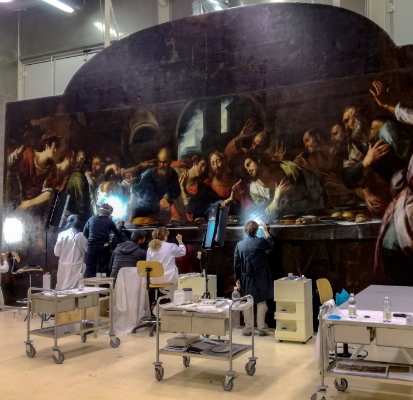The workshop dedicated to paintings on canvas has been designed to accommodate and work on large-format works, one of the main areas of specialization in the sector.
In recent years he has been able to enrich his experiences and skills thanks to important case studies on works by Palma il Giovane, Tintoretto, Veronese, Bassano, Giulio Cesare Procaccini.
There are also numerous interventions on cores of works that can be assimilated by type or collectible origin, coming from the Savoy residences and from important Italian museums (Savoy Gallery of Turin, Pinacoteca di Brera, Civic Museums of Padua, Oratory of the Compagnia di San Paolo, Castello di Racconigi, Pinacoteca di Varallo Sesia).
In line with the approach shared by all the Centre’s sectors, the Laboratory promotes an interdisciplinary methodology using historical, artistic, scientific and technical expertise.
The Laboratory staff is also involved in preventive conservation projects and is constantly engaged in the scheduled maintenance of the Savoy Residences and in the preparation of temporary exhibitions with condition reporting.
Director of Laboratories
Michela Cardinali
Deputy Director of Laboratories
Roberta Genta
Area Manager
Paola Buscaglia
Coordinator
Maria Grazia Zenzani
Restorers
Alessandra Destefanis,
Alessandro Gatti,
Valentina Parlato,
Davide Puglisi
Art historian
Marianna Ferrero
CASE STUDY
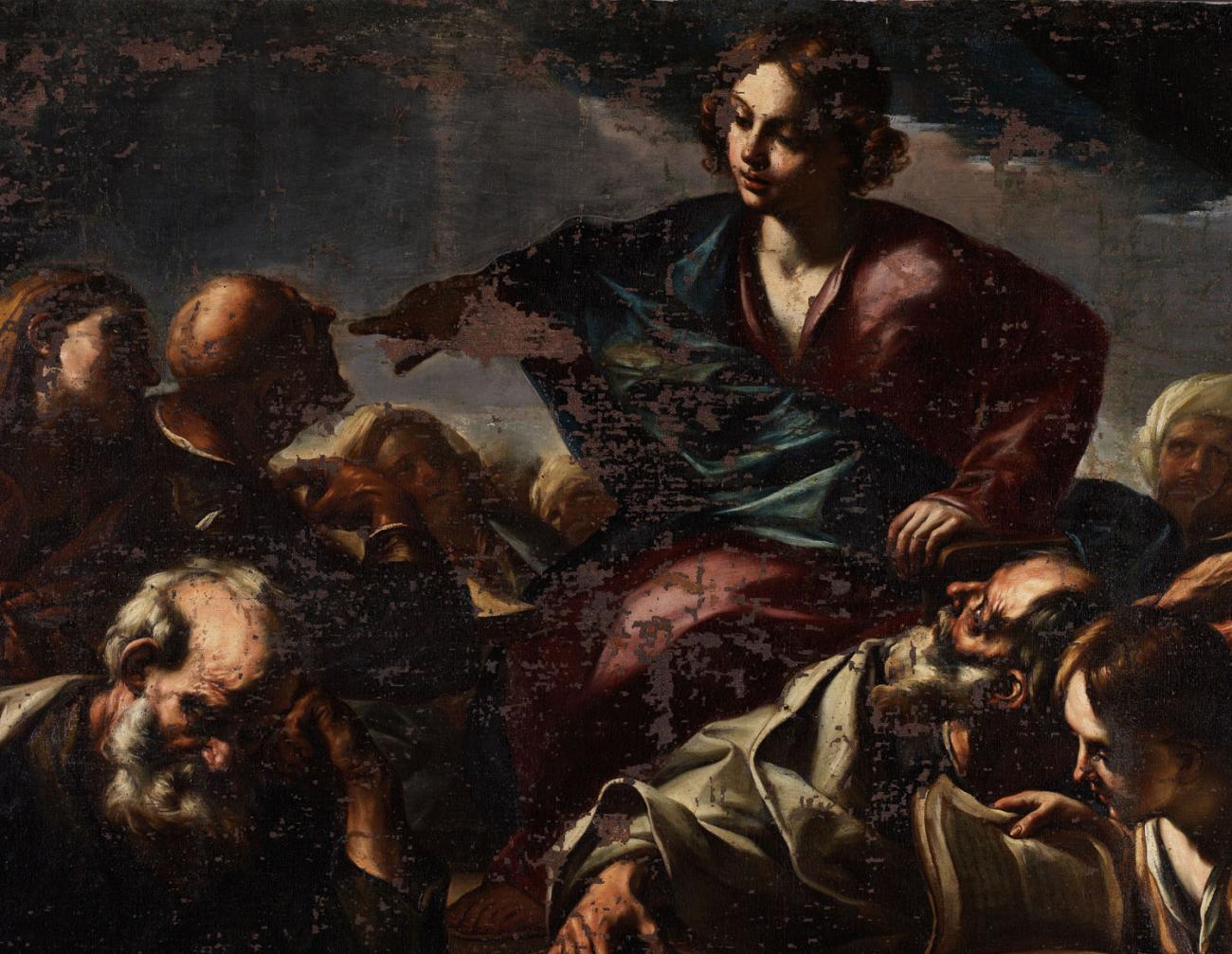
Giovanni Battista Beinaschi
Jesus Among the Doctors, 1675-1680
Regional Directorate of Piedmont Museums, Racconigi Castle
On the basis of comparison with other works by the painter, the attribution to Giovanni Battista Beinaschi was advanced by Rossana Vitiello, an art historian who directed the first restoration works, and proposed in 2010 on the occasion of the exhibition Memories of the Sacred in the collections of the Castle of Racconigi.
Because of its ‘wasting conditions’, in 1923 the painting was included in the list of discarded goods kept at the Castle of Moncalieri, where it had certainly been since the beginning of the century; between the thirties and forties of the twentieth century enters the collections of the Castle of Racconigi. The restoration carried out by the Centre provided for a first phase of study and intervention as part of the didactic activity of the Degree Course; thanks to the collaboration between the Regional Directorate of Piedmont Museums and the Consorzio delle Residenze Reali Sabaude, it was possible to complete the recovery of the work and its figurative legibility.
CASE STUDY
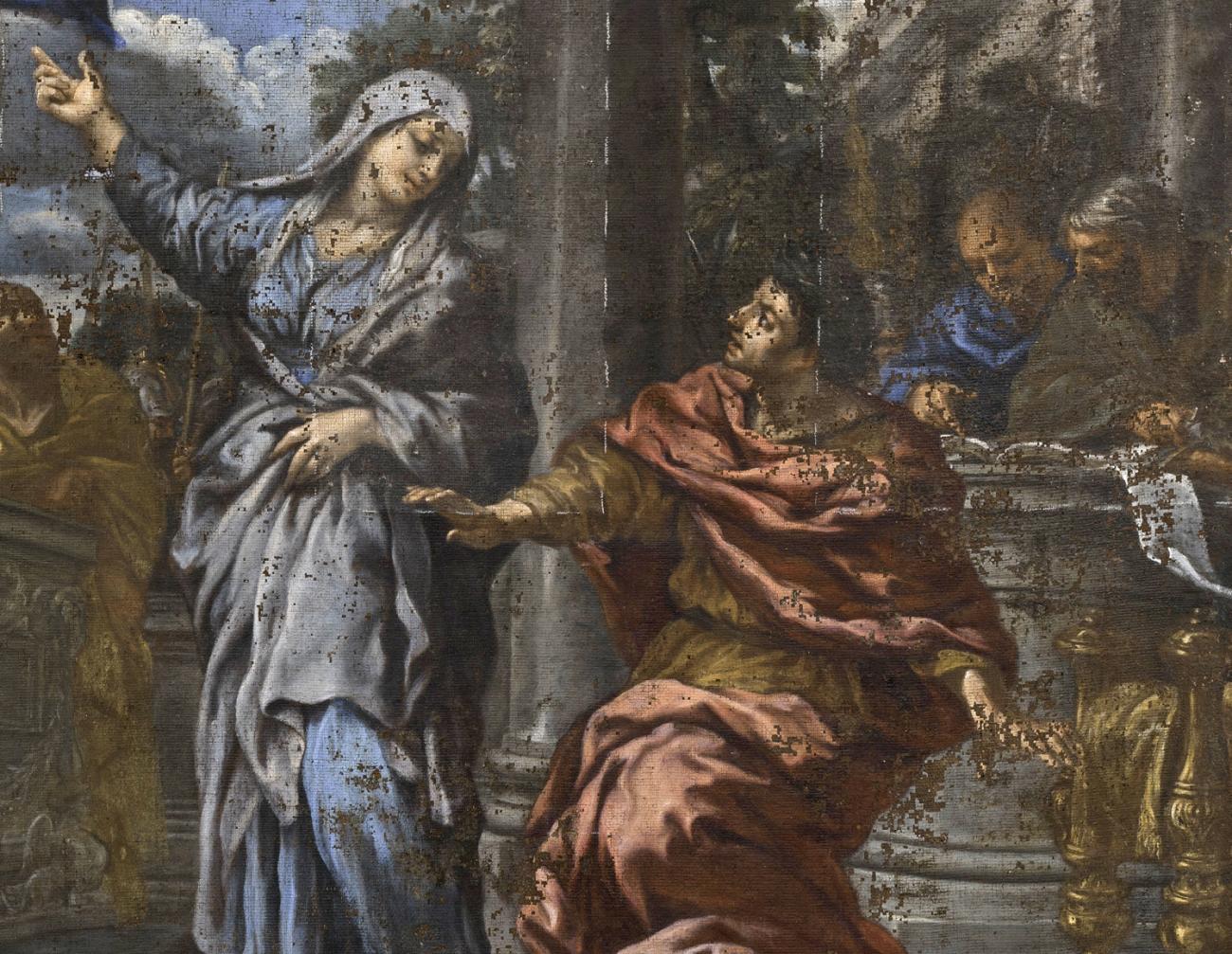
Atelier of Pietro Berrettini said by Cortona
The Sibyl announces to Augustus the advent of Christ, 1660-1670
Regional Directorate of Piedmont Museums, Racconigi Castle
The work is a faithful replica of the canvas of a similar subject today at the Musée des Beaux Arts in Nancy, painted by Pietro da Cortona in the 1750s on commission from Louis Phélypeaux de La Vrillière for the Hôtel de Toulouse in Paris.
The painting is the smallest of the three currently known versions of Nancy's painting: The other two are at the Royal Collection in Hampton Court and the Ringling Museum in Sarasota. After a passage documented in the collections of the Castle of Moncalieri, the painting arrives at the Castle of Racconigi between the thirties and forties of the twentieth century. The restoration carried out by the Centre provided for a first phase of study and intervention as part of the didactic activity of the Degree Course; thanks to the collaboration between the Regional Directorate of Piedmont Museums and the Consorzio delle Residenze Reali Sabaude, it was possible to complete the recovery of the work and its figurative legibility.
CASE STUDY
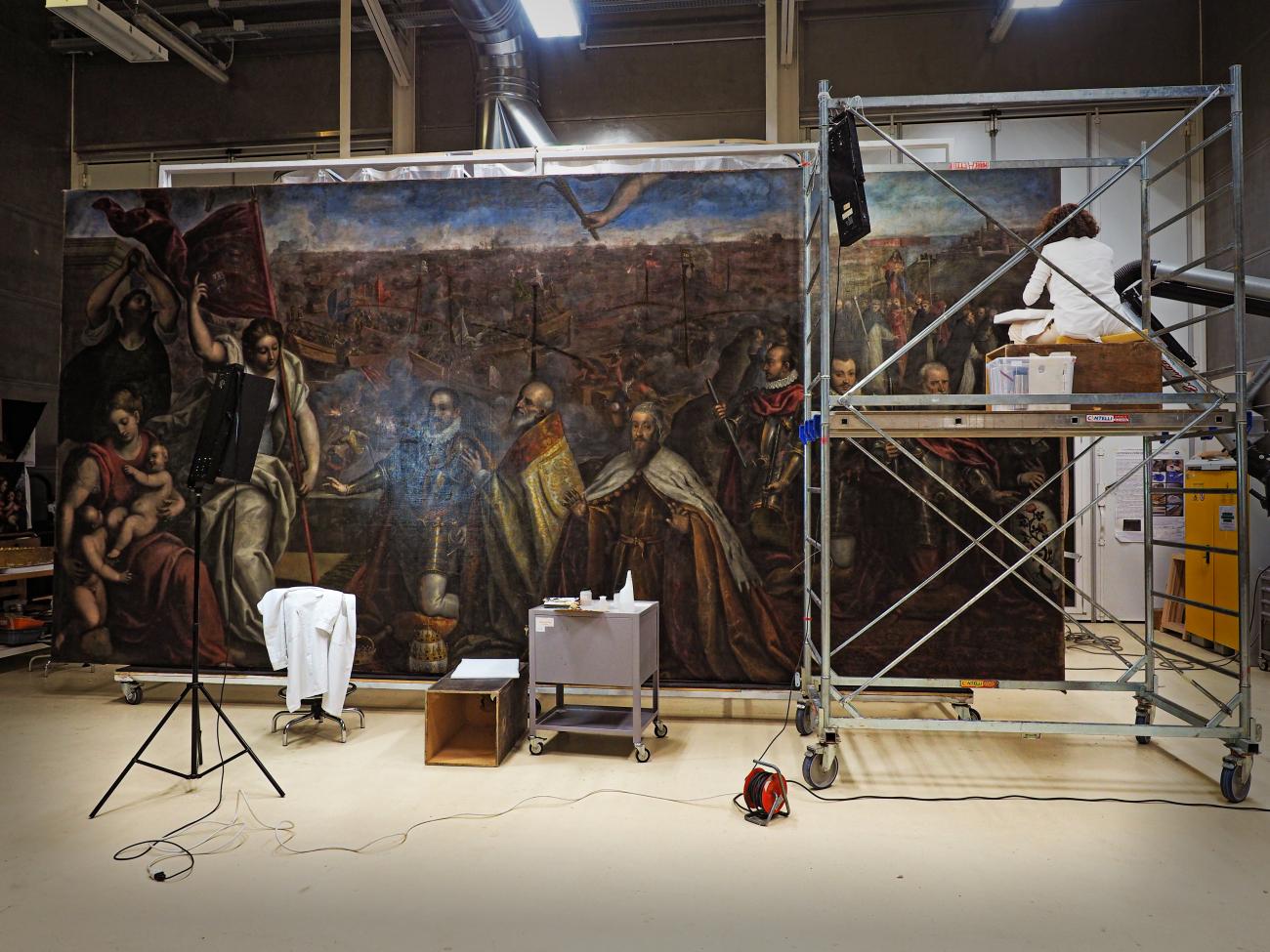
Jacopo Negretti (called Palma the Younger)
Celebration of the victory of the Battle of Lepanto, post 1571
Verbania (VB), Villa San Remigio
The demanding work on the imposing painting on canvas depicting the Celebration of the Battle of Lepanto di Palma il Giovane, coming from Villa San Remigio in Verbania, involved the collaboration of various bodies and was carried out thanks to the contribution of the Cassa di Risparmio di Torino Foundation (as part of the 2018 ‘Cantieri diffusi’ call), the Consorzio delle Residenze Reali Sabaude, the Municipality of Verbania and the 5 per thousand funds of the Ministry of Cultural Heritage and Activities.
It represented a very significant case study to develop methods and materials of intervention in the conservation of large canvases and to enrich the knowledge on the artistic technique of the Venetian masters of the sixteenth and seventeenth centuries.
CASE STUDY
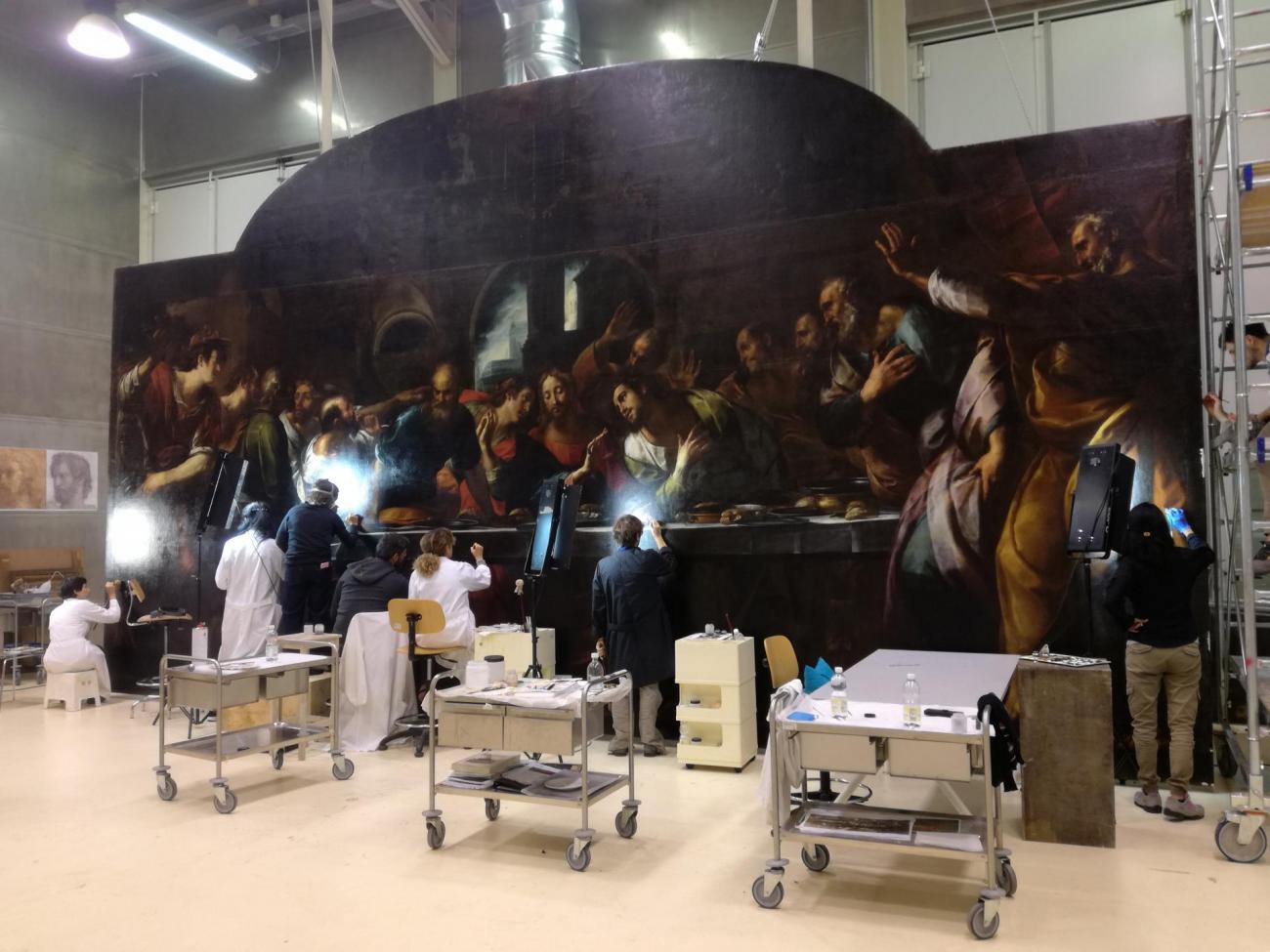
Giulio Cesare Procaccini
The Last Supper, 1618
Genoa, Church of SS. Annunziata of Vastato
The large size of the work, around 40 square metres of pictorial surface area, and the complexity of its restoration were an extraordinary opportunity for the canvas workshop to work: In addition to the Centre’s 9 restorers, the project involved 4 alumni of the Degree Course. In fact, the work was first studied and the restoration started with 2 degree theses that mainly addressed the problems related to the support and cleaning methodology.
The painting had been removed urgently from the counter-façade of the Genoese church because there had been a dangerous detachment of the lining canvas: arrived at the Centre in 2014 and left the workshops at the end of 2017 to be exhibited at the Galleria d’Italia exhibition in Milan.The last Caravaggio. Heirs and new masters’.







